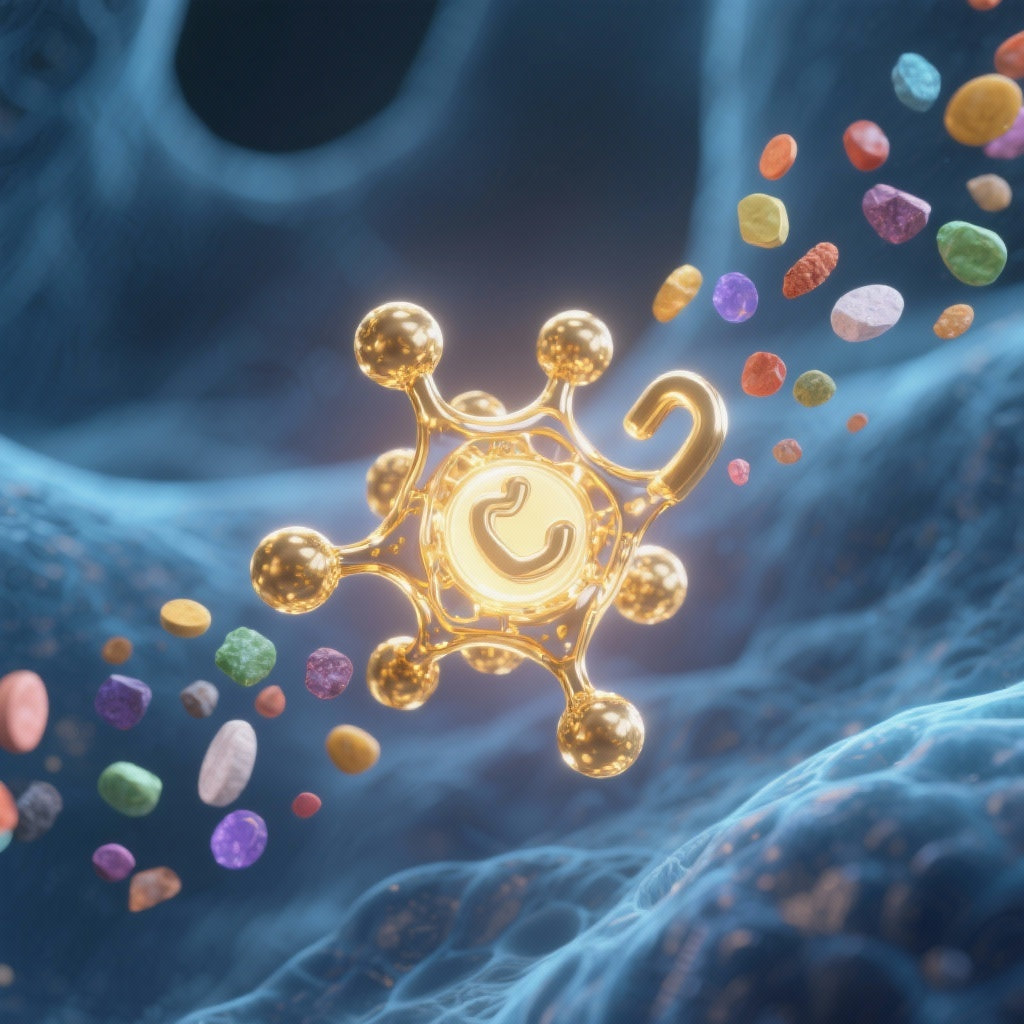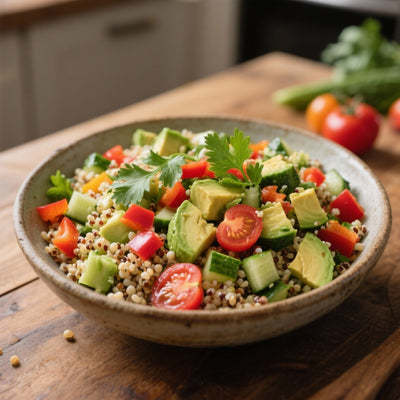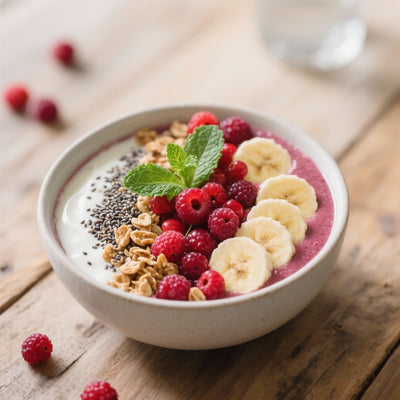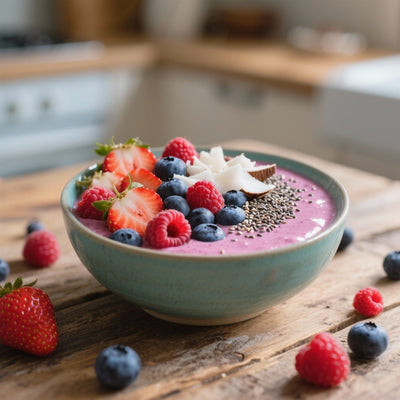What is bioavailability and how does fulvic acid improve it according to pharmacokinetic studies?
You choose your foods carefully, invest in quality supplements, and follow a balanced diet. But what if a large portion of these precious nutrients never reach their destination? This is the paradox of modern nutrition: we ingest, but we don't always absorb. The key to this mystery lies in a fundamental concept: bioavailability .
This scientific term refers to our body's ability to actually utilize what we consume. Understanding and optimizing bioavailability means moving from passive to active and efficient nutrition. In this article, we will explore this pillar of health in depth and discover how an ancient natural compound, fulvic acid, is revolutionizing our approach to nutrient absorption, supported by scientific evidence.
Demystifying Bioavailability: More Than Just Digestion
Bioavailability isn't simply digestion. It's the fraction of an administered substance (whether it's a nutrient, a drug, or a supplement) that reaches the bloodstream unchanged, ready to be used by cells. Imagine you're ordering a package (the nutrient). Digestion is the delivery to your door. Bioavailability is your ability to open the package and use its contents.
Several factors influence this complex process:
- The food matrix: A nutrient is never alone. The iron contained in spinach, for example, is less bioavailable because of the presence of oxalates that bind it.
- Gut health: A healthy intestinal lining and a balanced microbiota are essential for absorption. Inflammation or dysbiosis can significantly reduce bioavailability.
- Age and physiology: With age, gastric acid production decreases, which can affect the absorption of minerals such as calcium and magnesium.
- Nutritional interactions: Vitamin C improves the bioavailability of iron, while calcium can decrease it.
Ignoring bioavailability risks nutritional deficiencies, even with a diet considered perfect. This is where nature offers us a remarkably elegant solution.
Fulvic Acid: The Natural Carrier Par Excellence
Fulvic acid is an organic compound resulting from the millennia-long decomposition of plant matter. It is found in abundance in humic substances such as Shilajit, a precious resin from the Himalayan mountains. It is not a nutrient in itself, but rather a facilitator , a conductor of absorption.
Its unique molecular structure gives it extraordinary properties. It is one of the most powerful known natural electrolytes and chelators. The term "chelator" comes from the Greek word "chele," meaning "clamp." Fulvic acid acts like a molecular clamp: it binds to minerals and trace elements, transforms them into a water-soluble and bioavailable form, and transports them across cell membranes with remarkable efficiency.
Think of fulvic acid as a ride-hailing service for nutrients. It picks them up, protects them from the hustle and bustle of the digestive system, and delivers them directly to where the cells need them.
Science Under the Microscope: Pharmacokinetic Studies on Fulvic Acid
The claim that fulvic acid improves absorption is not a mere assertion. It is strongly supported by pharmacokinetics , the branch of pharmacology that studies the fate of a substance in the body. This field analyzes four key processes, known by the acronym ADME:
- Absorption : How the substance enters the body.
- Distribution : Where it goes in the body.
- Metabolism : How it is transformed.
- Excretion : How it is eliminated.
To measure absorption efficiency, scientists use several key indicators after a substance has been administered:
- Cmax: The maximum plasma concentration reached.
- Tmax: The time required to reach this maximum concentration.
- AUC (Area Under the Curve): Represents the total exposure of the body to the substance, i.e. the total amount absorbed over time.
Numerous studies have examined the effect of fulvic acid when co-administered with other nutrients. The results are spectacular.
+30% Absorption
Pharmacokinetic studies have demonstrated that co-administration of fulvic acid with Coenzyme Q10 (CoQ10) can increase its Area Under the Curve (AUC) by nearly 30%, signifying significantly greater total absorption and increased efficacy.
These studies reveal a consistent trend: when nutrients, particularly minerals or poorly soluble compounds like CoQ10, are combined with fulvic acid, there is an increase in AUC and Cmax , as well as a decrease in Tmax . In short: you absorb more nutrients, faster , and they reach a higher concentration in your blood.
Mechanisms of Action: The Triple Strategy of Fulvic Acid
How does fulvic acid achieve such feats? Its effectiveness relies on a three-pronged strategy, acting at different levels of the absorption process.
1. Chelation and Active Transport
In the complex environment of the stomach and intestines, minerals can be bound by antinutrients (such as phytates in grains or tannins in tea), forming insoluble compounds that the body cannot absorb. Fulvic acid intervenes by chelating the minerals first. It forms a stable, soluble complex that protects the mineral and makes it invisible to these antinutrients. This complex is then easily recognized and transported by the intestinal cells.
2. Improvement of Cellular Permeability
Fulvic acid doesn't just transport nutrients; it also prepares the way. Research suggests it can influence the electrical potential of cell membranes, making them more permeable and receptive to the nutrients it carries. It's as if it possesses a universal key capable of gently unlocking the door to our cells to allow essential elements to enter.
3. Support for the Intestinal Ecosystem
Optimal absorption is impossible without a healthy gut. Fulvic acid acts as a prebiotic, nourishing the beneficial bacteria in our microbiota. It also helps strengthen the integrity of the intestinal barrier. A healthy gut is one that absorbs efficiently. By supporting the entire gut ecosystem, fulvic acid creates an environment conducive to maximum bioavailability.
Beyond Minerals: Who Can Benefit from Fulvic Acid?
The impact of fulvic acid extends far beyond the simple absorption of minerals. It improves the bioavailability of a wide range of compounds, making its use relevant for many profiles:
- For athletes: To optimize the absorption of magnesium, zinc and electrolytes, crucial for performance and recovery.
- People with deficiencies: Particularly in iron, where fulvic acid can increase absorption while reducing the gastrointestinal side effects often associated with conventional iron supplements.
- Seniors: To counteract the natural age-related decline in absorption and ensure better utilization of essential nutrients.
- Supplement consumers: To maximize the return on investment of their supplementation with antioxidants, vitamins and other compounds.
Conclusion: Move from Ingestion to Assimilation
Bioavailability is the missing link between good nutrition and optimal health. Consuming the best nutrients in the world is useless if they are not absorbed. Science, through pharmacokinetic studies, shows us that fulvic acid is not just a trendy ingredient, but a powerful biological modulator capable of transforming our nutritional efficiency.
By acting as a smart transporter, cellular optimizer, and gut support, it ensures that your dietary efforts truly pay off. The next time you choose a supplement, don't just look at the dosage. Consider its bioavailability. The presence of an ingredient like fulvic acid, which occurs naturally in high-quality Shilajit, can make all the difference between a wasted nutrient and one that nourishes, repairs, and revitalizes your body at a cellular level.











